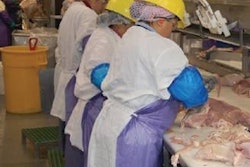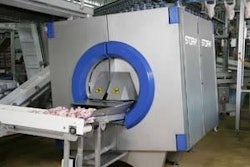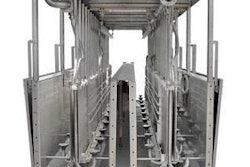
Davleyev, who spoke at USAPEEC's winter meeting in Washington, D.C., said that as modern retailers gain greater control of total food sales in Russia, it may be necessary for U.S. processors to move away from just packing leg quarters in bulk boxes if they hope to retain sales in Russia.
USAPEEC conducted a study of different options for packaging leg quarters for the Russian market so that they can be sold at retail in consumer sized packages. Davleyev said that defrosting bulk packed leg quarters and repackaging in consumer size packages and then refreezing them is not allowed in Russia. So, the study looked at numerous variations of two main options. One option explored was packaging leg quarters at U.S. plants in various consumer size containers. The other option was bulk packaging of leg quarters in the U.S. in manners that allow for consumer packaging in Russia without defrosting the product (see sidebar).
The study looked at the cost differences for the alternative means of packaging versus the current standard net weight bulk box. Random weight bags and random weight trays were found to be the most economical means of packing and shipping consumer sized packages of leg quarters from the U.S. to Russia.
Davleyev said that even if frozen leg quarters packaged in consumer-size packs are made available to Russian consumers, leg quarters will still be facing growing competition in Russia from fresh chicken. As grocery stores have gained market share for retail food sales, fresh chicken sales have increased as a percentage of total chicken sales. The U.S. chicken companies will have to work hard to retain a significant share of Russian chicken sales in the coming years.
The U.S. Soybean Export Council funded the USAPEEC study and details of the study are available from USAPEEC for its processing member companies.


















